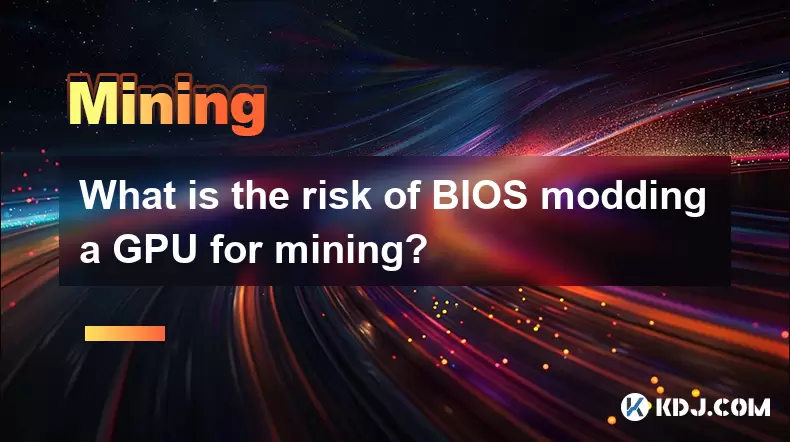-
 Bitcoin
Bitcoin $118200
0.49% -
 Ethereum
Ethereum $3580
0.33% -
 XRP
XRP $3.429
-0.49% -
 Tether USDt
Tether USDt $1.000
-0.05% -
 BNB
BNB $734.1
0.18% -
 Solana
Solana $177.7
0.26% -
 USDC
USDC $0.9999
-0.01% -
 Dogecoin
Dogecoin $0.2434
4.12% -
 TRON
TRON $0.3203
-1.58% -
 Cardano
Cardano $0.8334
1.59% -
 Hyperliquid
Hyperliquid $44.70
2.39% -
 Stellar
Stellar $0.4636
-1.10% -
 Sui
Sui $3.789
-0.43% -
 Chainlink
Chainlink $18.49
4.03% -
 Hedera
Hedera $0.2674
-0.08% -
 Avalanche
Avalanche $25.08
6.37% -
 Bitcoin Cash
Bitcoin Cash $520.4
1.12% -
 Shiba Inu
Shiba Inu $0.00001495
1.88% -
 Litecoin
Litecoin $112.5
9.34% -
 UNUS SED LEO
UNUS SED LEO $8.994
0.24% -
 Toncoin
Toncoin $3.209
-0.74% -
 Polkadot
Polkadot $4.393
2.95% -
 Uniswap
Uniswap $10.16
-0.07% -
 Monero
Monero $325.2
1.09% -
 Ethena USDe
Ethena USDe $1.001
0.00% -
 Bitget Token
Bitget Token $4.898
-1.03% -
 Pepe
Pepe $0.00001326
0.54% -
 Dai
Dai $1.000
0.02% -
 Aave
Aave $317.2
-0.43% -
 Cronos
Cronos $0.1214
0.07%
What is the risk of BIOS modding a GPU for mining?
BIOS modding can boost GPU mining performance but carries risks like overheating, instability, voided warranties, and potential hardware failure.
Jul 19, 2025 at 11:42 pm

Understanding BIOS Modding in the Context of GPU Mining
BIOS modding refers to the process of modifying a Graphics Processing Unit's (GPU) firmware to alter its performance characteristics. In the context of cryptocurrency mining, miners often resort to this practice to unlock hidden potential or improve efficiency. This includes increasing memory clock speeds, adjusting voltage settings, and sometimes removing manufacturer-imposed limitations.
When a GPU is designed for gaming or general-purpose computing, it is optimized for those specific workloads. However, mining demands continuous operation under high load, which may not align with the default design goals of consumer-grade GPUs. As such, many miners attempt to tweak the BIOS to achieve better hashrates and power efficiency.
Thermal Stress and Longevity Concerns
One of the most significant risks associated with BIOS modding a GPU for mining is the increased thermal stress on the hardware. By overclocking memory or core components via BIOS modifications, the GPU generates more heat during operation. This can lead to temperatures that exceed the safe operating range defined by the manufacturer.
- Higher temperatures accelerate component degradation, especially capacitors and VRMs.
- Cooling systems may become inadequate under sustained mining conditions after BIOS tweaks.
- Thermal paste degradation occurs faster, potentially leading to thermal throttling or permanent damage.
Without proper cooling solutions and monitoring tools, a BIOS-modded GPU can suffer from reduced lifespan or sudden failure, making it a critical concern for long-term mining operations.
Stability Issues and System Crashes
Modifying the BIOS often leads to instability, especially if the changes are aggressive or incompatible with the rest of the system configuration. Miners may experience frequent crashes, blue screens, or unexpected reboots when running a modified BIOS.
- Incorrect voltage settings can cause memory errors, reducing mining efficiency and causing invalid shares.
- Unstable BIOS configurations may corrupt the firmware, requiring specialized recovery procedures.
- System instability increases downtime, directly impacting profitability in mining setups.
These issues are compounded when multiple GPUs are used in a single mining rig. A single unstable card can affect the entire system’s reliability, making troubleshooting time-consuming and complex.
Warranty Voidance and Hardware Replacement Challenges
Most manufacturers explicitly state that altering the BIOS voids the warranty. If a BIOS-modded GPU fails, the user will likely have no recourse for repair or replacement through official channels.
- Customer support typically refuses service upon detecting signs of BIOS modification.
- Traces of modding can be detected even after restoring stock BIOS, as checksum mismatches may occur.
- Resale value drops significantly if potential buyers suspect prior BIOS tampering.
For users who invest heavily in GPU mining hardware, this loss of warranty protection can represent a major financial risk, especially if multiple cards fail prematurely due to modding-related stress.
Risk of Bricking the GPU Permanently
Perhaps the most severe consequence of BIOS modding is the possibility of bricking the GPU entirely. Bricking refers to rendering the device completely non-functional due to a failed firmware update or incompatible BIOS flash.
- Improper flashing procedures can corrupt the BIOS, leaving the GPU unresponsive.
- Some cards require specialized hardware or services to recover from a bad flash.
- Even experienced modders occasionally encounter irreversible failures, especially when testing experimental BIOS versions.
Once bricked, the GPU may no longer POST (Power On Self Test), display output, or respond to software commands, effectively turning it into an expensive paperweight unless professional recovery is possible.
Impact on Mining Profitability and Efficiency
While BIOS modding aims to enhance mining performance, it doesn’t always result in net gains. Increased power consumption, reduced stability, and higher maintenance requirements can offset any improvements in hashrate.
- Overclocked settings often draw more power, raising electricity costs.
- Higher energy usage reduces net profit margins, especially in regions with expensive electricity.
- Frequent system crashes require manual intervention, increasing operational overhead.
Additionally, some mining pools penalize invalid shares caused by unstable hardware, further decreasing earnings. Therefore, the trade-off between hashrate gains and overall system efficiency must be carefully evaluated before proceeding with BIOS modding.
Frequently Asked Questions
Q: Can BIOS modding improve Ethereum mining performance?
Yes, in some cases, BIOS modding can increase Ethereum mining hashrates by optimizing memory timings and voltages. However, these gains come with increased risk and should be approached with caution.
Q: How can I check if my GPU BIOS has been modified?
Tools like GPU-Z allow you to read and compare the current BIOS version against stock versions. Checksum mismatches or unusual memory timing values may indicate a modded BIOS.
Q: Is there a way to revert to the original BIOS after modding?
Yes, provided the original BIOS backup was saved before modification. Flashing the original BIOS back using tools like NVFlash or ATIWinFlash can restore the GPU to factory settings.
Q: Are all GPU brands equally risky when BIOS modding for mining?
No, different GPU brands and models react differently to BIOS modifications. NVIDIA cards, for example, tend to be more sensitive to voltage adjustments than certain AMD models, which are generally more forgiving but still carry risks.
Disclaimer:info@kdj.com
The information provided is not trading advice. kdj.com does not assume any responsibility for any investments made based on the information provided in this article. Cryptocurrencies are highly volatile and it is highly recommended that you invest with caution after thorough research!
If you believe that the content used on this website infringes your copyright, please contact us immediately (info@kdj.com) and we will delete it promptly.
- Tinubu, the North, and Appointments: Too Little, Too Late?
- 2025-07-20 03:20:15
- Stellar Blade Hacked: When Crypto Scams Target Your Favorite Games
- 2025-07-20 03:50:12
- MoonBull, Doginme, and Meme Coins: What's the Buzz in 2025?
- 2025-07-20 03:50:12
- Dogecoin's Wild Ride: Price Forecast & the Utility Sector Buzz
- 2025-07-20 03:55:12
- Tinubu's Appointments: A Northern Perspective
- 2025-07-20 03:55:12
- Tinubu's Northern Appointments: A Cynical Ploy or Genuine Inclusion?
- 2025-07-20 04:00:12
Related knowledge

How are crypto mining profits taxed?
Jul 14,2025 at 12:28am
Understanding Cryptocurrency Mining and TaxationCryptocurrency mining involves validating transactions on a blockchain network and earning rewards in ...

How to keep a mining rig cool
Jul 12,2025 at 01:42pm
Understanding the Importance of Cooling in Mining RigsCryptocurrency mining is an intensive process that places heavy demand on hardware components, p...

How to mine crypto on a gaming PC
Jul 16,2025 at 12:00pm
What is Crypto Mining on a Gaming PC?Crypto mining involves using your computer's processing power to validate transactions on a blockchain network. A...

How to set up a crypto miner
Jul 16,2025 at 09:14am
Understanding Ethereum Gas Fees: What Are They and How Do They Work?Ethereum gas fees are a fundamental aspect of the network, representing the cost r...

Can you mine crypto on a laptop?
Jul 16,2025 at 02:21am
Is It Feasible to Mine Cryptocurrency on a Laptop?Mining cryptocurrency on a laptop is technically possible, but feasibility depends heavily on the ha...

Is crypto mining worth it?
Jul 16,2025 at 01:21am
Understanding the Basics of Crypto MiningCrypto mining refers to the process of validating transactions on a blockchain network by solving complex mat...

How are crypto mining profits taxed?
Jul 14,2025 at 12:28am
Understanding Cryptocurrency Mining and TaxationCryptocurrency mining involves validating transactions on a blockchain network and earning rewards in ...

How to keep a mining rig cool
Jul 12,2025 at 01:42pm
Understanding the Importance of Cooling in Mining RigsCryptocurrency mining is an intensive process that places heavy demand on hardware components, p...

How to mine crypto on a gaming PC
Jul 16,2025 at 12:00pm
What is Crypto Mining on a Gaming PC?Crypto mining involves using your computer's processing power to validate transactions on a blockchain network. A...

How to set up a crypto miner
Jul 16,2025 at 09:14am
Understanding Ethereum Gas Fees: What Are They and How Do They Work?Ethereum gas fees are a fundamental aspect of the network, representing the cost r...

Can you mine crypto on a laptop?
Jul 16,2025 at 02:21am
Is It Feasible to Mine Cryptocurrency on a Laptop?Mining cryptocurrency on a laptop is technically possible, but feasibility depends heavily on the ha...

Is crypto mining worth it?
Jul 16,2025 at 01:21am
Understanding the Basics of Crypto MiningCrypto mining refers to the process of validating transactions on a blockchain network by solving complex mat...
See all articles

























































































